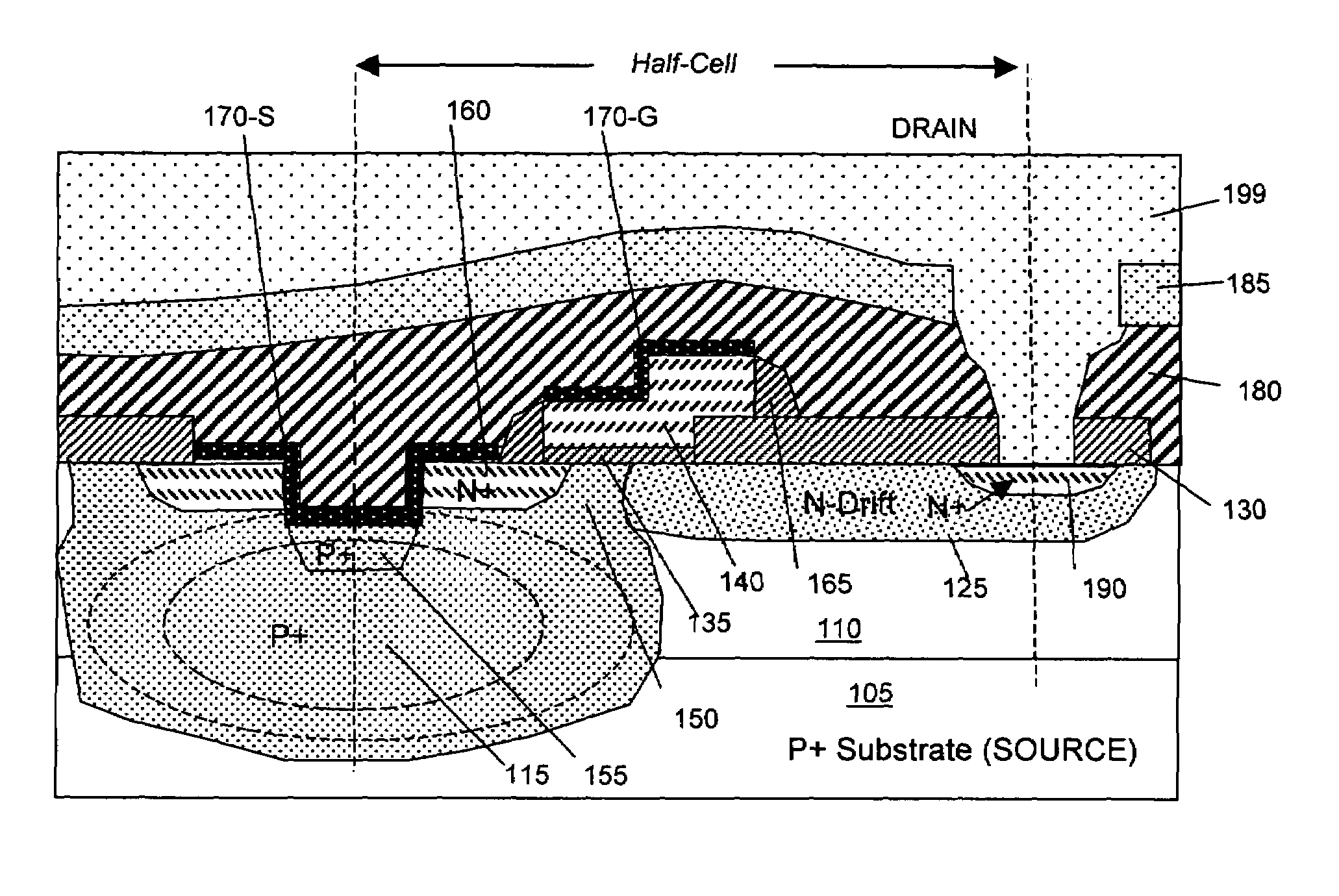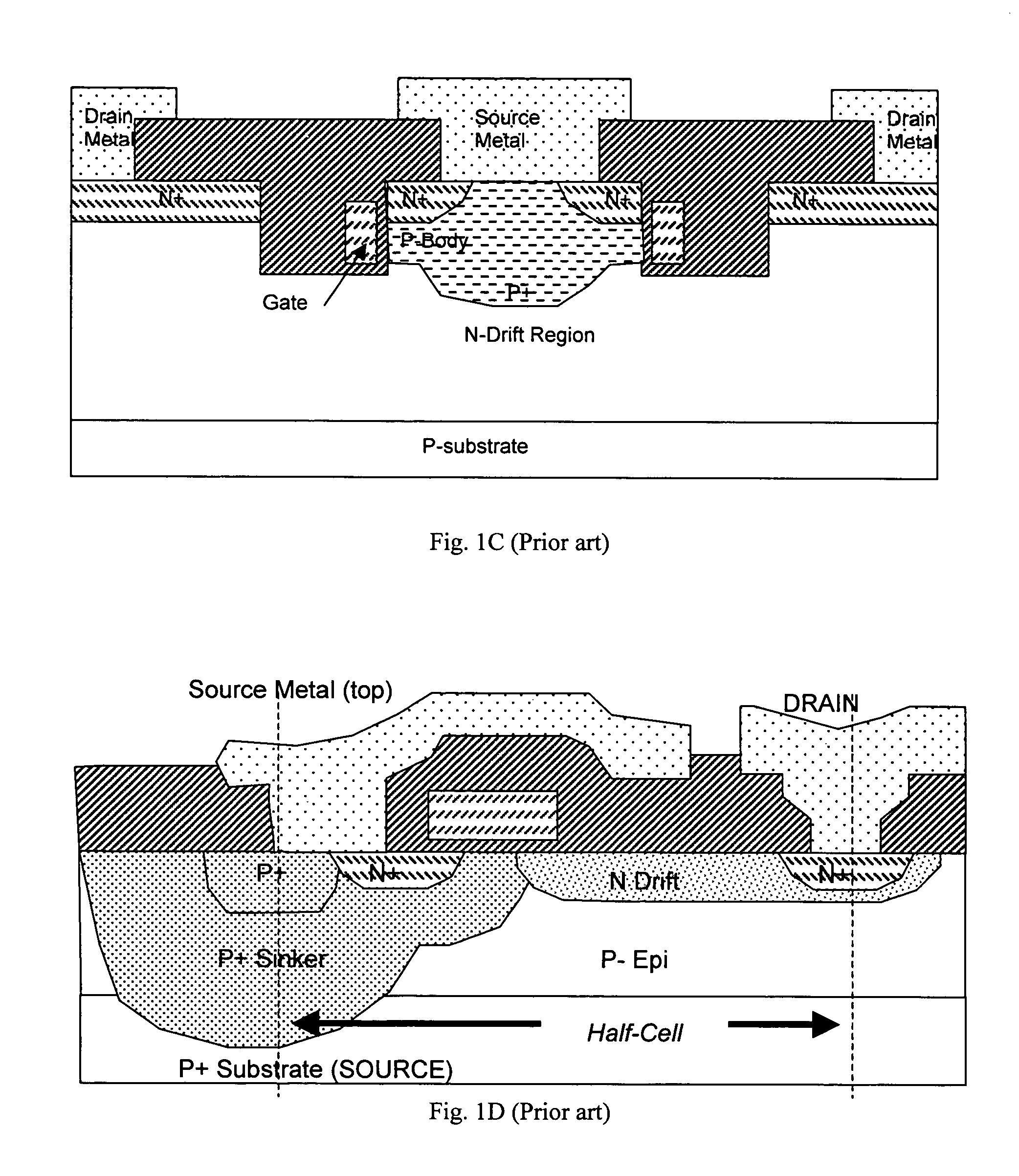Bottom source LDMOSFET structure and method
a metal oxide semiconductor and bottom source technology, applied in the direction of transistors, semiconductor devices, electrical apparatus, etc., can solve the problems of reducing the inductance of semiconductor power devices including the source inductance of mosfet, fet and jfet devices, and the inability of devices to be fabricated in general, so as to reduce the cell pitch and reduce the manufacturing cost
- Summary
- Abstract
- Description
- Claims
- Application Information
AI Technical Summary
Benefits of technology
Problems solved by technology
Method used
Image
Examples
Embodiment Construction
[0027]Referring to FIG. 2 for a cross sectional view of a bottom source (BS) lateral diffusion MOS device of this invention. The BSLDMOS device is supported on a P+ substrate 105 functioning as a bottom source electrode. A layer of P− epitaxial layer 110 is supported on top of the substrate 105. A deep sinker region 115 doped with P+ dopant ions below an active cell area in the device is formed in the epitaxial layer at a depth and extended laterally to a bottom of a drain drift region 125 to compensate some of the N− dopant in the accumulation of the transistor for tailoring a dopant profile of N-drift region 125 to minimize the gate-drain capacitance while maintaining a low drain to source resistance Rdson._The deep sinker region 115 further extends vertically both downward to the bottom P+ substrate 105, and upward to a body region 150 that forms a channel at a top surface under a gate oxide 135. The sinker regions 115 functions as a combined channel and also as a buried source b...
PUM
 Login to View More
Login to View More Abstract
Description
Claims
Application Information
 Login to View More
Login to View More - R&D
- Intellectual Property
- Life Sciences
- Materials
- Tech Scout
- Unparalleled Data Quality
- Higher Quality Content
- 60% Fewer Hallucinations
Browse by: Latest US Patents, China's latest patents, Technical Efficacy Thesaurus, Application Domain, Technology Topic, Popular Technical Reports.
© 2025 PatSnap. All rights reserved.Legal|Privacy policy|Modern Slavery Act Transparency Statement|Sitemap|About US| Contact US: help@patsnap.com



